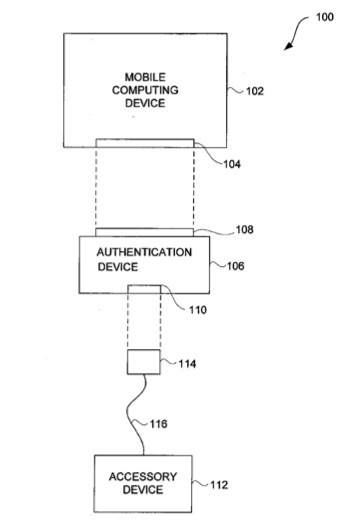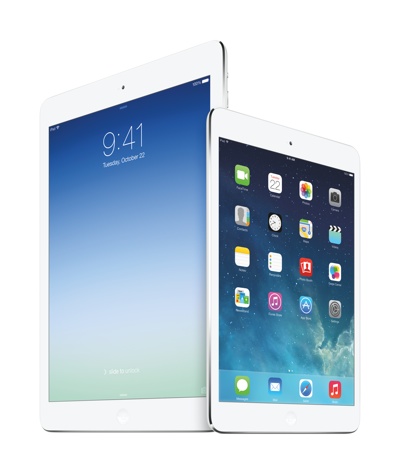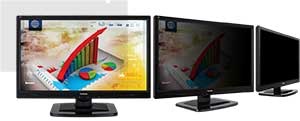Improved techniques to control utilization of accessory devices with electronic devices are disclosed in a new Apple patent (number 20110061113) at the US Patent & Trademark. The invention relates to electrical devices and, more particularly, to electrical devices, such as media players, that receive accessory devices.
Per the patent, the improved techniques can use cryptographic approaches to authenticate electronic devices, namely, electronic devices that interconnect and communicate with one another. One aspect pertains to techniques for authenticating an electronic device, such as an accessory device. Another aspect pertains to provisioning software features (e.g., functions) by or for an electronic device (e.g., a host device). Different electronic devices can, for example, be provisioned differently depending on different degrees or levels of authentication, or depending on manufacturer or product basis. Still another aspect pertains to using an accessory (or adapter) to convert a peripheral device (e.g., USB device) into a host device (e.g., USB host).
The improved techniques are particularly well suited for electronic devices, such as media devices, that can receive accessory devices. One example of a media device is a media player, such as a hand-held media player (e.g., music player), that can present (e.g., play) media items (or media assets). The inventors are Jonathan Jake Rubenstein, Anthony M. Fadell, Jesse L. Dorogusker, Mitchell Adler and John Wesley Archibald.
Here’s Apple’s background and summary of the invention: “A media player stores media assets, such as audio tracks or photos, that can be played or displayed on the media player. One example of a media player is the iPod. media player, which is available from Apple Computer, Inc. of Cupertino, Calif. Often, a media player acquires its media assets from a host computer that serves to enable a user to manage media assets. As an example, the host computer can execute a media management application to manage media assets. One example of a media management application is iTunes, version 4.2, produced by Apple Computer, Inc.
“A media player typically includes one or more connectors or ports that can be used to interface to the media player. For example, the connector or port can enable the media player to couple to a host computer, be inserted into a docking system, or receive an accessory device. There are today many different types of accessory devices that can interconnect to the media player. For example, a remote control can be connected to the connector or port to allow the user to remotely control the media player. As another example, an automobile can include a connector and the media player can be inserted onto the connector such that an automobile media system can interact with the media player, thereby allowing the media content on the media player to be played within the automobile.
“Currently, the connectors or ports of a media player are open for use so long as a compatible connector or port is utilized. Consequently, numerous third-parties have developed accessory devices for use with other manufacturers’ media players. One difficulty is that the manufacturer of a media player has no control over the various different accessory devices that can be connected to the media player. This is problematic because third-party accessory devices may be inferior, error-prone, disruptive (e.g., resource draining), or even damaging to the media player itself. Another problem is that third-party accessory devices which are unauthorized by the manufacturer of the media device may attempt to utilize features of the media device in an inappropriate or undesired manner.
“Thus, there is a need for improved techniques to enable manufacturers of electronic devices to control the nature and extent to which accessory devices can be utilized with their electronic devices.
“Broadly speaking, the invention pertains to improved techniques to control utilization of accessory devices with electronic devices. The improved techniques can use cryptographic approaches to authenticate electronic devices, namely, electronic devices that interconnect and communicate with one another.
“One aspect of the invention pertains to techniques for authenticating an electronic device, such as an accessory device. Another aspect of the invention pertains to provisioning software features (e.g., functions) by or for an electronic device (e.g., a host device). Different electronic devices can, for example, be provisioned differently depending on different degrees or levels of authentication, or depending on manufacturer or product basis. Still another aspect of the invention pertains to using an accessory (or adapter) to convert a peripheral device (e.g., USB device) into a host device (e.g., USB host). Embodiments of the invention may pertain to one or more of these aspects or other aspects disclosed herein.
“The invention can be implemented in numerous ways, including as a method, system, device, apparatus (including graphical user interface), or computer readable medium. Several embodiments of the invention are discussed below.
“As a portable electronic device, one embodiment of the invention includes at least: a media storage device that stores media content for one or more media items; a media presentation module that retrieves media content for at least one of the media items from the media storage and causes the media content to be presented for a user of the portable electronic device; an authentication table that stores authentication information for various accessory devices that are authorized to couple to and interact with the portable electronic device; and an authentication module that determines whether a particular accessory device that is coupled to the portable media device is authorized to interoperate with the portable electronic device based on at least a portion of the authentication information stored in the authentication table.
“As an accessory device for a portable electronic device, one embodiment of the invention includes at least: an input/output port for interacting with the portable electronic device; an authentication algorithm; an authentication key associated with the accessory device; an authentication controller, operatively connected to the input/output port, for performing authentication operations using at least the authentication algorithm and the authentication key; and accessory circuitry that performs operations associated with the accessory device.
“As a connector for connecting an accessory device to a media player, one embodiment of the invention includes at least: a connector body; a plurality of electrical contacts attached within the connector body and serving to provide electrical connections between the accessory device and the media player; and a controller disposed in the connector body and providing an authentication key that allows the accessory device to be authenticated by the media player.
“As a method for authorizing an accessory device for use with an electronic device, one embodiment of the invention includes at least the acts of: receiving a device identifier from the accessory device; receiving an authentication value from the accessory device; determining whether the accessory device is authentic based on the authentication value; and authorizing usage of the accessory device with the electronic device when it is determined that the accessory device is authentic.
“As a method for authorizing an accessory device for use with an electronic device, another embodiment of the invention includes at least the acts of: detecting attachment of the accessory device with the electronic device; sending a random number to the accessory device after attachment of the accessory device has been detected; subsequently receiving an encoded value from the accessory device; receiving a device identifier from the accessory device; obtaining a cryptographic key based on the device identifier; decoding the encoded value using the cryptographic key to produce a decoded value; determining whether the decoded value corresponds to the random number; and authorizing usage of the accessory device with the electronic device when it is determined that the decoded value corresponds to the random number.
“As a method for authorizing an accessory device for use with an electronic device, still another embodiment of the invention includes at least the acts of: detecting attachment of the accessory device with the electronic device; sending an authentication request, including at least a random number, to the accessory device after attachment of the accessory device has been detected; subsequently receiving an authentication response from the accessory device, the authentication response being in response to the authentication request, and the authentication response including at least an encoded value and a device identifier for the accessory device; obtaining a cryptographic key based on the device identifier; decoding the encoded value using the cryptographic key to produce a decoded value; and authorizing usage of the accessory device with the electronic device based on a correspondence between the decoded value and the random number.
“As a method for authorizing an accessory device for use with an electronic device, still yet another embodiment of the invention includes at least the acts of: receiving a random number from the electronic device; encoding the random number using a cryptographic key provided within the accessory device, thereby producing an encoded value; and sending the encoded value and a device identifier to the electronic device.
“As a method for controlling interaction between a media player and an accessory device, one embodiment of the invention includes at least the acts of: determining a classification of the accessory device; identifying an authorization level for the accessory device; and selectively activating features of the media device that are available to be used in conjunction with the accessory device based on the classification and authorization level of the accessory device.
“As a media player system, one embodiment of the invention includes at least: a media player storing media content and supporting a plurality of predetermined functions, and an accessory device capable of connecting to the media player. The media player and the accessory device interact to perform an authentication process and, based on the authentication process, specific functions of the media device are selectively activated and thus available for use by the accessory device.
“Other aspects and advantages of the invention will become apparent from the following detailed description taken in conjunction with the accompanying drawings which illustrate, by way of example, the principles of the invention.”
— Dennis Sellers




